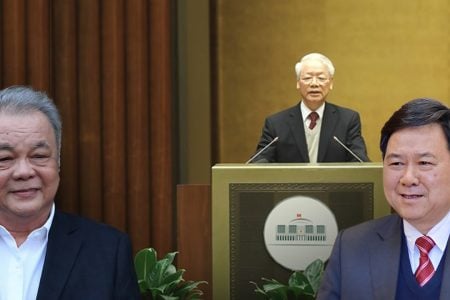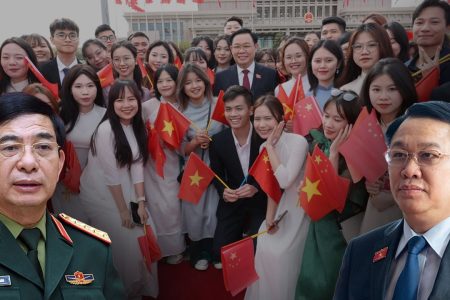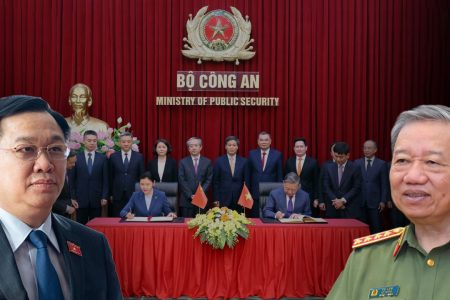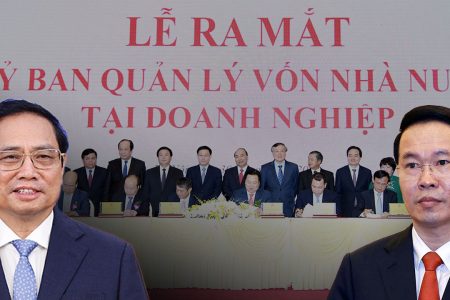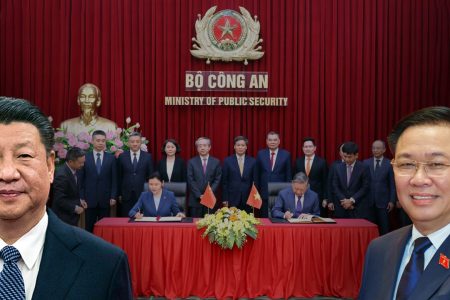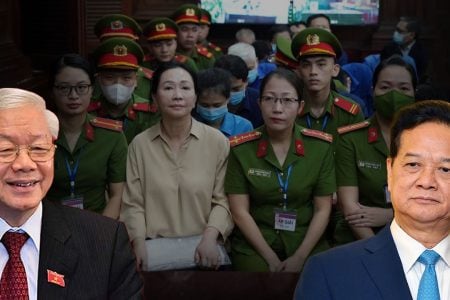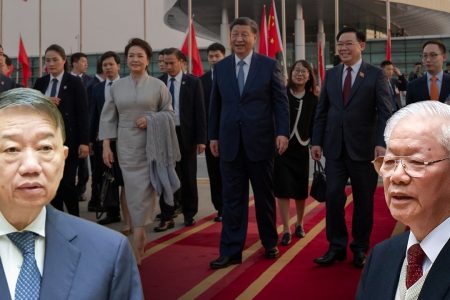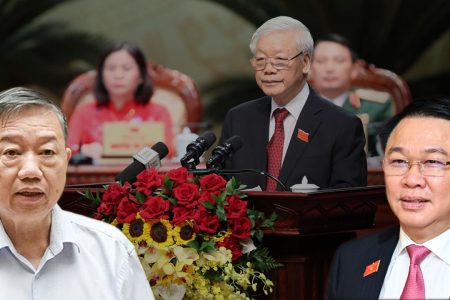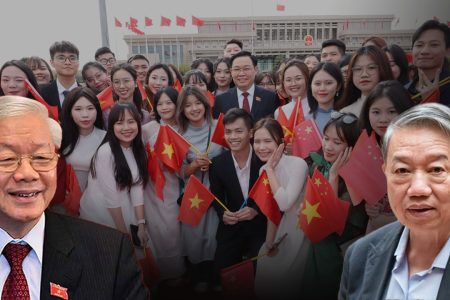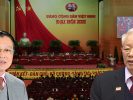
The macroeconomic report for the fourth quarter of 2020 of the Institute of Economic and Policy Research (VEPR), published on February 11, shows that Vietnam’s largest import market is China with $84.18 billion, and Vietnam’s largest export market is the US with $77 billion, up 25.6% from a year earlier.
According to VEPR, in 2020, Vietnam had a trade deficit of $35.28 billion with China and a trade surplus of $63.36 billion with the US, up 34.76% on the year.
From these data, VEPR said that Vietnam is facing the risk of becoming a temporary import for the re-export market that China takes advantage of for the purpose of circumventing US sanctions on Chinese exports to the American market.
Previously, from July 2020, the Chinese Embassy in Hanoi said that Vietnam had surpassed Malaysia and became China’s largest trading partner in the Association of Southeast Asian Nations (ASEAN).
Professor Nguyen Mai, former deputy minister of Planning and Investment of Vietnam, commented on the risk of Vietnam becoming a Chinese transshipment place:
“Certainly China will find ways to sell goods that are difficult to export to the US and other markets, so it is possible that China needs an ASEAN gateway to trade through the US.”
The domestic media quoted Mekong Economics chief economist, Adam McCarty, that Vietnam could be merged with China when selling goods to the US and other markets around the world, a typical example is steel products being exported from Vietnam to the US.
Dr. Vu Quang Viet, who worked for the UN Statistics Office and is also an observer of the economic situation of Vietnam, almost agrees with Mr. McCarty, that
“If Vietnam becomes a place where China smuggles goods to other countries in the world, countries, especially the US, will impose taxes on those goods. For example, Vietnam has exported China-made steel and aluminum to the US. The US has raised import duties to some 250%.”
In fact, Vietnam imports from China a lot of computers, electronic products, equipment components, tools, machinery spare parts …
Under the view of the Institute for Economic and Policy Research, the sudden growth in imports from China in addition to high levels of exports to the US on some of the same items makes the story of temporary import for re-export of China’s goods more obvious than the expansion of domestic production.
From this point, it is inferred that FDI inflows, especially from China, will create adverse competition for domestic firms, affecting Vietnam’s domestic production and exports.
In other words, the reputation of being a “Made in Vietnam” brand but in fact only benefits foreign investors, but most of them are Chinese, according to the economist, Dr. Ngo Tri Long:
“Suppose China gets Vietnam to act as a bridge, as a springboard to sell Chinese goods, and if Vietnam is not vigilant, does not comply with its international commitments, and does not make public to be transparent in accordance with international laws, Vietnam will be excluded from the international marketplace.”
Therefore, VEPR recommends that the Government have the policy to tighten the regulations on the origin of raw materials to avoid falling into the situation that its import-export market is used by China to sell their goods to the US without the tax being increased.

Since May 2018, the US Department of Commerce has imposed a 256.44% anti-dumping tax on rolled steel products from Vietnam, after it was discovered that these products originated in China and have avoided the US anti-dumping tax.
Another important point of import and export is that when Vietnam increases its export to the world market, Chinese companies are more likely to increase ẽports to Vietnam. This makes the Vietnam-China trade balance even more different and possibly worsens the situation.
Container trucks transporting goods from China into Vietnam through Tan Thanh border gate, Lang Son in 2014 (Reuters)
Dr. Vu Ngoc Xuan, a lecturer at Hanoi National Economics University, affirmed that the risk of Vietnam becoming a temporary import-re-export market of Chinese goods actually happened:
“The US-China trade war makes Chinese goods entering the US subject to export tax, so there may be a fraud of the origin of Chinese goods but under Vietnam’s marks to be exported to the US. There has been such a situation in the past 2 years that the Vietnamese Customs Agency, as well as the Vietnamese government, have taken measures to inspect, check and handle it. If we let the situation of origin fraud, Vietnam becomes the alleged partner of currency manipulation and will be punished by increasing taxes on Vietnamese exports.”
Dr. Vu Ngoc Xuan continues that Vietnam’s economy is too dependent on FDI, which is a direct investment from abroad. The achievements in export and export surplus are all contributed by foreign direct investment enterprises but not by the local firms.
Two aspects of the problem need to be seen clearly, economics lecturer Vu Ngoc Xuan analyzes:
“The angle is that when Chinese goods enter Vietnam without creating added value but taking advantage of so-called Vietnam’s origin to avoid export taxes to the US, we must inspect, check and impose heavy penalties.”
And if Vietnam imports raw materials, tools, and machinery to have an intermediate stage of production in Vietnam, which means creating added value to export to the US, that is a completely different story and should be encouraged, Dr. Vu Ngoc Xuan emphasized:
“To avoid dependence on China, it is the view of those who do not delve deeply into demand and supply chain. It is impossible without importing inputs from China to create export goods because now China is the world factory with macroeconomics, good quality, and very competitive price. Therefore, not a single enterprise does not import inputs from China. It must be analyzed from such an angle, not just that we have too much trade deficit from China. Just say that the angle that ‘escapes China’ is the non-economic angle.”
The VEPR Institute for Economic and Policy Research reminds Vietnam to always put itself in the position of a country susceptible to becoming a transshipment of Chinese goods to the US.
Economic and financial experts believe that this is a conundrum that Vietnam must be wary of and solve synchronously in the current difficult context.
Thoibao.de (Translated)




